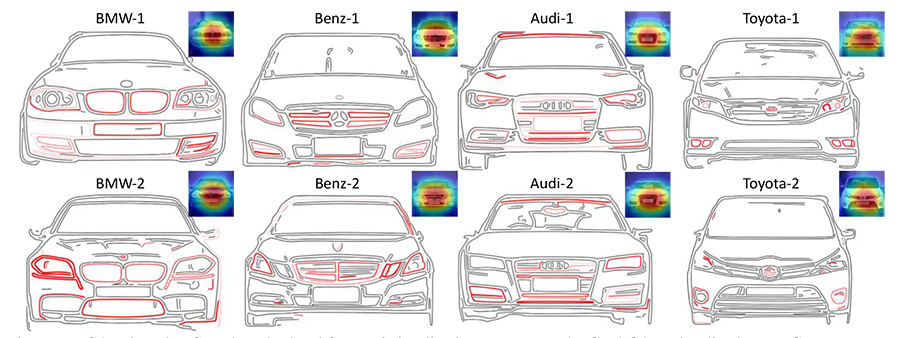Automating consistent product design
Researchers develop AI-driven method to automate the discovery of brand related features in product design.
When it comes to product design, brand consistency is one key to success across product lines, managing brands’ essence and positively relating to profit. Companies who rely on the release of a next generation model each year are challenged to design a product that stands out from what’s already on shelves but still embodies the brand.
Researchers at Carnegie Mellon University hope to lighten the load of product designers by introducing a fully automated deep learning architecture that can identify visual brand-related features. The model called BIGNet, Brand Identification Graph Neural Network, is trained using SVG images of products. BIGNet pinpoints consistencies among what might be thousands of curves on the product image in order to identify the visual brand.

BIGNet captures luxury segments’ well-distinguishable car parts including grille, headlights, and fog lights, while there are much fewer geometric clues on affordable cars (Toyota) that it has to rely on logo detection.
“There was no existing method to automatically extract style-related features using machine learning before BIGNet,” explained Yu-hsuan “Sean” Chen, a Ph.D. candidate in mechanical engineering. “Designers created rules in their head, but they were hard to articulate and challenging to transfer across product lines.”
The team tested BIGNet across different products, for example popular cell phone brands Apple and Samsung. The model had a 100% accuracy rate in differentiating between the two, identifying specific features, such as screen gaps and camera lens location, that indicated one brand over another.
To showcase the adaptability and generalizability of BIGNet across different products and design scales, the team assessed BIGNet against 10 automotive brands. The model identified Audi, BMW, and Mercedes Benz with the most accuracy, confirming that luxury makers have superior brand consistency over economy cars.
This technology can save domain experts significant time. Companies will no longer need to rely on people who have worked with them for 20+ years to understand the brand.
Sean Chen, Ph.D. candidate, Mechanical Engineering
“This technology can save domain experts significant time. Companies will no longer need to rely on people who have worked with them for 20+ years to understand the brand,” Chen said.
Currently BIGNet is implemented with 2-dimensional straight-on images. Researchers are eager to extend their testing to 3D imaging and hope to develop the model to identify more than just brand identity. For example, what details make a “muscle” car vs. “sporty.”
“Having worked in the area of formalizing brands through design languages for nearly three decades, I find the potential of BIGNet to use ML to uncover brand languages an exciting advancement with many potential directions for application,” said Jon Cagan, lead author and head of the department of mechanical engineering.
Chen is co-advised by Cagan and Burak Kara, a mechanical engineering professor.
This research was published in ASME-JMD.
